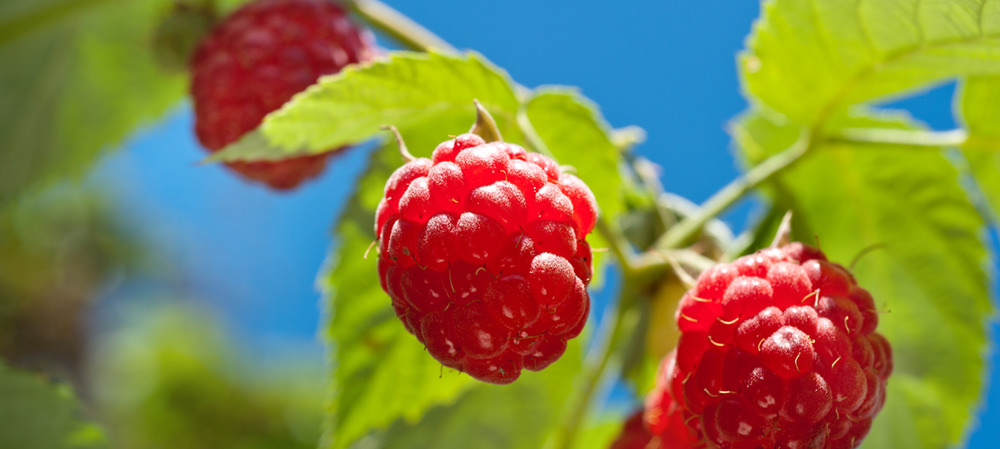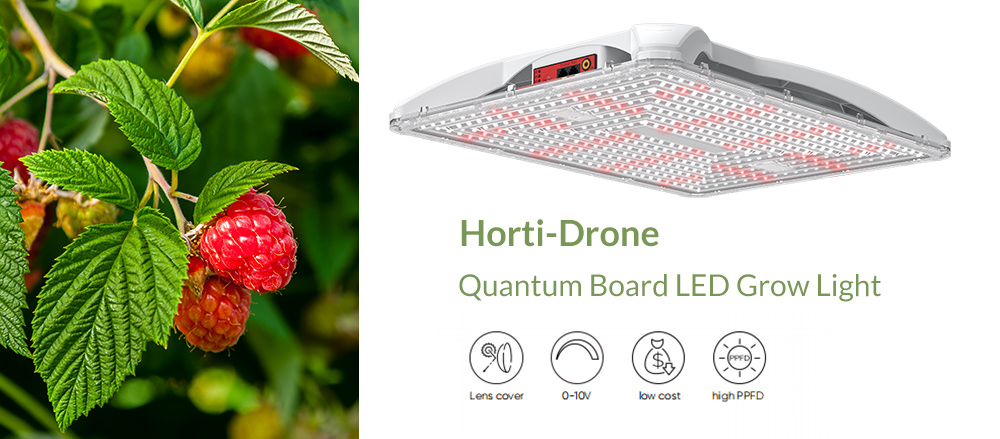How to Grow Red Raspberry with LED Grow Light: A Complete Guide

Red raspberries are sweet and juicy, and they are often used in desserts, jams, and jellies. They are also full of vitamin C, fiber, and antioxidants, which are good for your health. Therefore, red raspberries are popular for commercial cultivation. But low temperatures and the lack of sunlight during the winter can limit production and yields. Since LED grow lights can mimic natural sunlight and thus improve production and yields, commercial growers are turning to LED grow lights. Moreover, LED grow lights are energy-efficient, cost-effective, and environmentally friendly, which means LED grow lights can help growers achieve their growth goals with fewer costs. But growing red raspberries under LED grow lights requires proper operation and care to achieve optimal plant growth and production. In this blog, we will show you some essential tips, including how to choose, set up, and care for LED grow lights to grow red raspberries.
How to choose LED grow light for red raspberry
Light is critical for the growth and development of red raspberry plants. They absorb light and convert it into energy to support their growth. But not all LED grow lights are created equal. The light spectrum, intensity, and duration of light will affect photosynthesis. Therefore, it is essential to choose one that suits the needs of red raspberry plants.
Red raspberry plants require a different light spectrum at different stages of their growth cycle. Blue light helps promote vegetative growth. It encourages photosynthesis and increases the production of chlorophyll, which helps plants absorb light and nutrients. Red light is essential for the flowering and fruiting stages of red raspberry plants. It contributes to the formation of buds and fruiting. White light can provide the full spectrum of light that a plant needs to grow. Thus, full spectrum LED grow lights are the best choice for red raspberry plants. In addition, LED grow lights that can be dimmed to different light intensities are effective in improving plant growth at different growth stages, as well as reducing energy consumption. The wattage of LED grow lights depends on the size of your grow room and the quantity of plants.
Here, we recommend Horti-Drone for red raspberry cultivation. Horti-Drone comes with an enhanced full spectrum and dimmable light intensity. The spectrum can closely mimic the sun and meet the needs of the whole light cycle of red raspberry plants. Adjustable light intensity fits different growing stages well while saving energy costs.
How to set up LED grow light for red raspberry
After receiving your LED grow lights, you can set them up.
Firstly, install LED grow lights above your growing areas with hooks or brackets and connect them to a power source. Make sure they are securely attached and stable. To ensure safety, all products should be installed by licensed contractors or electricians.
Then, place LED grow lights at an appropriate distance from red raspberry plants. The specific distance varies from wattage, light intensity, and the growing stage of plants.
At last, set the optimal light cycle and duration for your plants. Generally speaking, you should use lower intensity and longer duration during the vegetative stage and higher intensity and shorter duration during the flowering stage. Red raspberry plants require 6 to 8 hours of full sunlight per day to grow and produce fruit. For indoor red raspberry plants, it is recommended to provide about 10 to 16 hours of artificial light per day. Turn on LED grow lights and provide 12 to 14 hours of lighting per day during the vegetative stage, and about 10 to 12 hours of lighting per day during the flowering and fruiting stages. This lighting strategy may fit most red raspberry plants.
How to care for red raspberry under LED grow lights
Except for lighting, raspberry plants also require careful care for healthy and robust growth. To care for red raspberry plants under LED grow lights, you need to take water, humidity, fertilizer, temperature, PH, and pruning into consideration.
- Water: Red raspberry plants require consistent moisture but not waterlogging. You should water your plants deeply and regularly, keeping the soil moist without waterlogging.
- Humidity: The optimal humidity for red raspberry plants is between 50% and 70%. A too-dry environment will make your plants struggle to thrive. Excess humidity, however, will cause issues with pollination and pests. If the humidity is too high, you can add a fan or other machines to improve ventilation.
- Fertilizer: A balanced fertilizer can provide your plants with the nutrients they need to grow and produce high-quality fruit. The balanced fertilizer should contain nitrogen, phosphorus, potassium, calcium, etc.
- Temperature: The optimal temperature range for red raspberry plants is between 60°F and 75°F. Keep a warm temperature to ensure the consistent and robust growth of red raspberry plants.
- PH: Red raspberry plants grow well in soil that has a PH between 5.5 and 6.5. Regularly testing the PH levels of your growing medium and adjusting as necessary to ensure it remains within the desired range.
- Pruning: Pruning is critical for maintaining plant health and maximizing fruit production in red raspberry plants. Remove dead or diseased leaves and thin out crowded or weak canes after harvest. Pruning can also promote air circulation and light penetration, which improve plant health and overall fruit quality.
In conclusion, here are three steps to growing red raspberry with LED grow lights. Firstly, you should choose the right LED grow lights for your plants. Full spectrum LED grow lights would be the best option. Then, you need to set up the LED grow lights. The specific distance between LED grow lights and res raspberry plants varies from wattage, light intensity, and the growing stage of plants. It is recommended to provide about 10 to 16 hours of light per day. Finally, you should provide optimal growing conditions for your plants. Consistent moisture and warm temperatures are required to ensure robust growth.
Looking for LED grow lights for your plants, contact us now.


